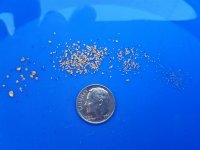shofs
Full Member
- Jun 5, 2013
- 244
- 597
- Detector(s) used
- Bazooka Sniper Sluice 30"
- Primary Interest:
- All Treasure Hunting
Went out to the creek today to test out Hunt4gold's upcoming fluid bed sluice prototype. In summary, things are really looking really good. I don't want to divulge too much information prematurely so I apologise if some of my points are vague. My current sluice is the bazooka sniper 30" model. It's my go to I use it regardless of where I'm prospecting and I've become quite familiar with it so that is what my review of Hunt4gold's sluice is in comparison with.
Durability
I really throw my current sluice around quite hard so I was relieved to see the construction of this design followed in par with the bazookas durability as the same materials are used.
Design
Without going into too much detail the design of the sluice was familiar to what I'm used to using which was really a selling point to me. Don't fix what isn't broke right? It looks and feels quite similar to the bazooka but with some obvious changes. Including slope added to the body of the sluice before the fluid bed resulting in the bed lying parallel to the ground while the sluice is set at an angle. The box of the fluid bed does not carry the taper of the rest of the sluice resulting in equal spacing across the grizzlies and the grizzlies seem to be at a smoother angle. Internally the fluidizing chamber is similar but changes have been made with attention to catching fine gold but being a prototype I won't go into to much detail. There is also a built in little row of riffles for spotting the gold which was fun to see. They didn't seem to harm the functionality as they didn't retain material but you could see at least if you are on the gold.
Functionality
Same as the bazooka. No classifying and empties in a pan or bucket. Seems to be able to run at less of an angle or maybe less depth thanks to the slope in the design. The part that sold it to me though was the grizzlies. They were at a smooth angle and as such there was a lot less rock build ups. Additionally the box not tapering at the grizzlies prevented the jams on the sides like I'm used to. No more digging out rocks with your fingers yay! That alone would sell me.
Summary
Once this hits the market those waiting to buy a fluid bed sluice will definitely be satisfied. Those who already have one would appreciate the aided functionality of this design. Thanks to Hunt4gold for letting me test it out.
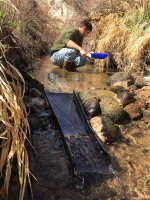
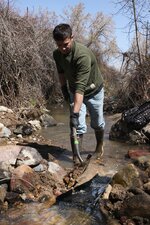
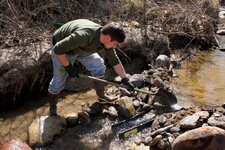
The inlaid riffles for gold spotting.
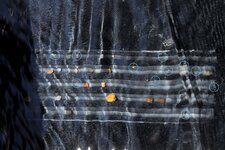
Concentrates
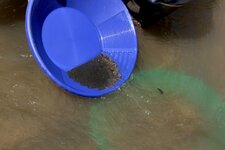
Dug for about 40min. Looks good, didn't blow out the small gold and kept the larger pieces. Nice. I'll update with cleanout pics.
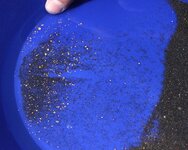
Durability
I really throw my current sluice around quite hard so I was relieved to see the construction of this design followed in par with the bazookas durability as the same materials are used.
Design
Without going into too much detail the design of the sluice was familiar to what I'm used to using which was really a selling point to me. Don't fix what isn't broke right? It looks and feels quite similar to the bazooka but with some obvious changes. Including slope added to the body of the sluice before the fluid bed resulting in the bed lying parallel to the ground while the sluice is set at an angle. The box of the fluid bed does not carry the taper of the rest of the sluice resulting in equal spacing across the grizzlies and the grizzlies seem to be at a smoother angle. Internally the fluidizing chamber is similar but changes have been made with attention to catching fine gold but being a prototype I won't go into to much detail. There is also a built in little row of riffles for spotting the gold which was fun to see. They didn't seem to harm the functionality as they didn't retain material but you could see at least if you are on the gold.
Functionality
Same as the bazooka. No classifying and empties in a pan or bucket. Seems to be able to run at less of an angle or maybe less depth thanks to the slope in the design. The part that sold it to me though was the grizzlies. They were at a smooth angle and as such there was a lot less rock build ups. Additionally the box not tapering at the grizzlies prevented the jams on the sides like I'm used to. No more digging out rocks with your fingers yay! That alone would sell me.
Summary
Once this hits the market those waiting to buy a fluid bed sluice will definitely be satisfied. Those who already have one would appreciate the aided functionality of this design. Thanks to Hunt4gold for letting me test it out.



The inlaid riffles for gold spotting.

Concentrates

Dug for about 40min. Looks good, didn't blow out the small gold and kept the larger pieces. Nice. I'll update with cleanout pics.

Last edited:


 And yes, I have ran it flat as possible. She works, but I've always thought she could be improved. I'm so stoked.
And yes, I have ran it flat as possible. She works, but I've always thought she could be improved. I'm so stoked.